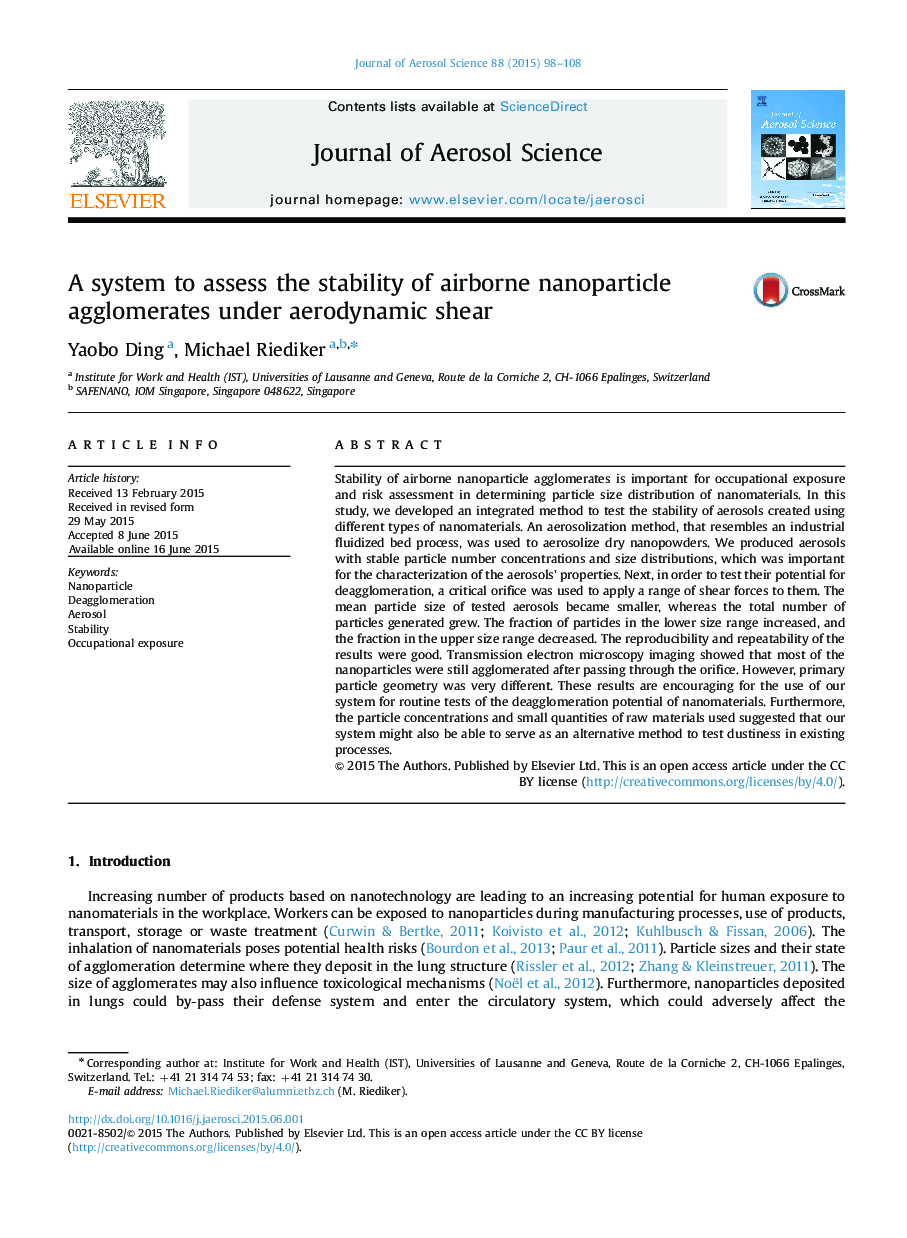| Article ID | Journal | Published Year | Pages | File Type |
|---|---|---|---|---|
| 6344440 | Journal of Aerosol Science | 2015 | 11 Pages |
Abstract
Stability of airborne nanoparticle agglomerates is important for occupational exposure and risk assessment in determining particle size distribution of nanomaterials. In this study, we developed an integrated method to test the stability of aerosols created using different types of nanomaterials. An aerosolization method, that resembles an industrial fluidized bed process, was used to aerosolize dry nanopowders. We produced aerosols with stable particle number concentrations and size distributions, which was important for the characterization of the aerosols׳ properties. Next, in order to test their potential for deagglomeration, a critical orifice was used to apply a range of shear forces to them. The mean particle size of tested aerosols became smaller, whereas the total number of particles generated grew. The fraction of particles in the lower size range increased, and the fraction in the upper size range decreased. The reproducibility and repeatability of the results were good. Transmission electron microscopy imaging showed that most of the nanoparticles were still agglomerated after passing through the orifice. However, primary particle geometry was very different. These results are encouraging for the use of our system for routine tests of the deagglomeration potential of nanomaterials. Furthermore, the particle concentrations and small quantities of raw materials used suggested that our system might also be able to serve as an alternative method to test dustiness in existing processes.
Related Topics
Physical Sciences and Engineering
Earth and Planetary Sciences
Atmospheric Science
Authors
Yaobo Ding, Michael Riediker,
